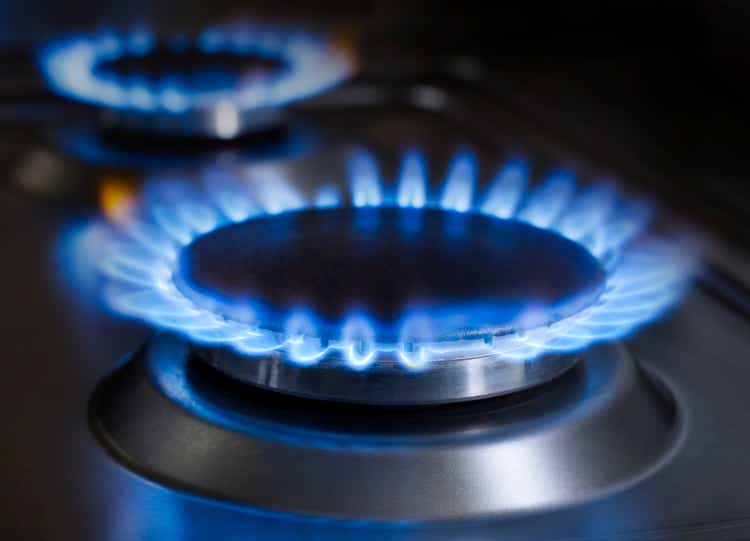U.S. natgas plunges most in four weeks as drilling slowdown hopes jolted

posteriori/E+ via Getty Images
U.S. natural gas futures plunged more than 7% Monday, giving back about half of last week's spike that was attributed to a smaller than expected increase in U.S. supplies in storage.
According to analysts at Goldman Sachs, the increase "exacerbated a short-covering-driven rally" in Henry Hub natural gas that started the previous week prior.
For the week ended May 12, the Baker Hughes weekly survey showed a decline of 16 in the number of active U.S. rigs drilling for natural gas to 141, which Goldman said was the largest one-week drop in more than seven years.
But in a disappointment for bullish investors, the Baker Hughes natural gas rig count was unchanged for the week ended May 19, which could mean that drilling activity is not slowing down so far after all, and that production rates could stay higher throughout 2023.
Front-month Nymex natural gas (NG1:COM) for June delivery closed -7.1% to $2.40/MMBtu Monday, the largest one-day dollar and percentage decline since April 26.
ETFs: (NYSEARCA:UNG), (UGAZF), (BOIL), (KOLD), (UNL), (FCG)
In the spot market, mild weather and ample hydropower in the U.S. West pressured next-day gas prices for Monday at the PG&E Citygate in Northern California to $3.52/MMBtu, its lowest since March 2021.
Data provider Refinitiv said natural gas production in the U.S. Lower 48 states rose to 101.5B cf/day so far in May, which would edge past April's monthly record of 101.4B cf/day, while it forecast U.S. gas demand including exports would drop from 90.2B cf/day this week to 89.5B cf/day next week.
Meanwhile, European natural gas continued its decline, dropping briefly below €29/MWh to the lowest level since mid-June 2021, as weak industrial demand and plentiful supplies weighed on prices.
Goldman Sachs said it sees the possibility of a floor for European in the mid-€20s, which could cause gas demand to increase by 9M-12M cm/day as plants switch away from coal.
U.S. natural gas prices look set to revive and possibly could double during the next 16 months, but natural gas ETFs "could disappoint," John Overstreet writes in an analysis published on Seeking Alpha.